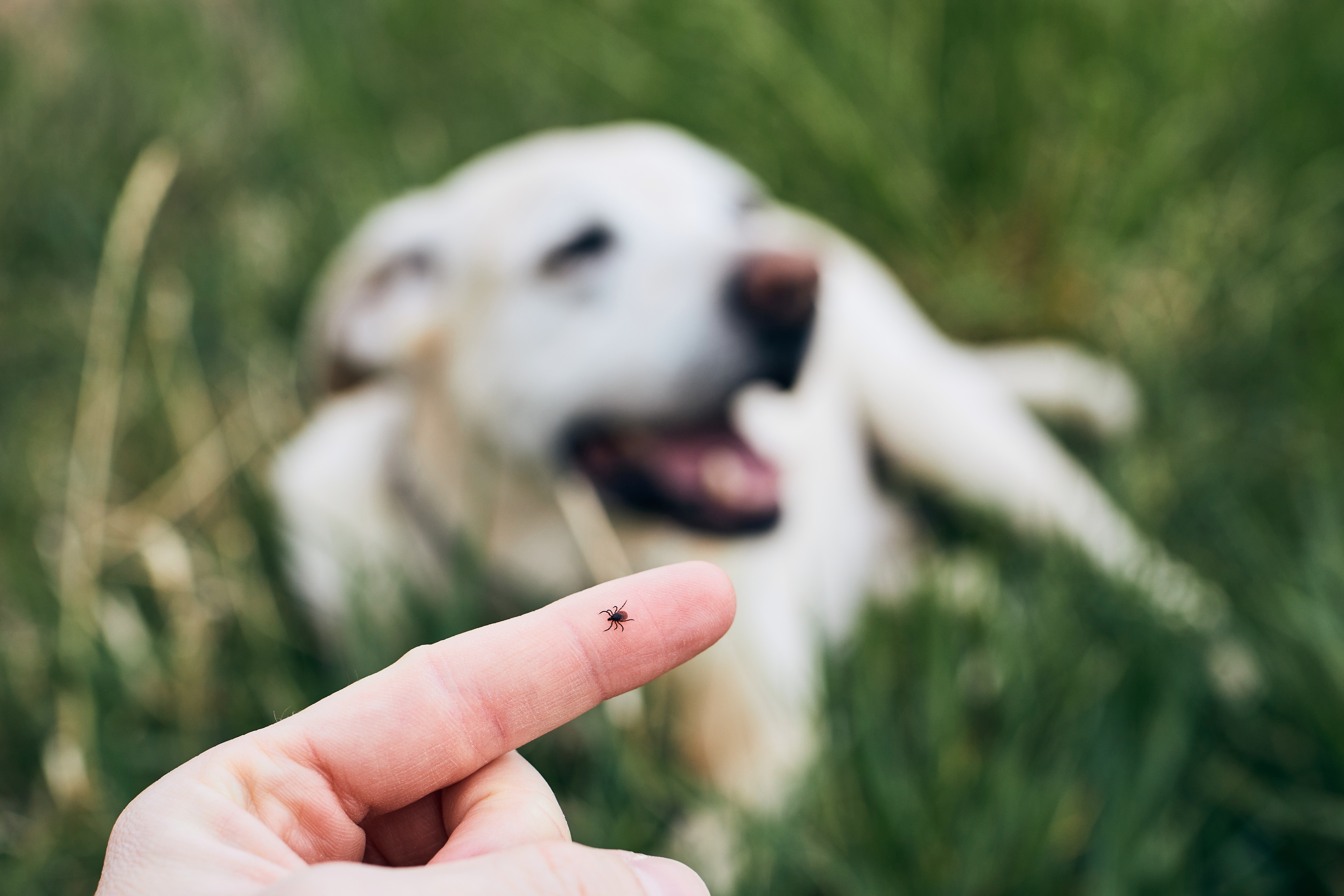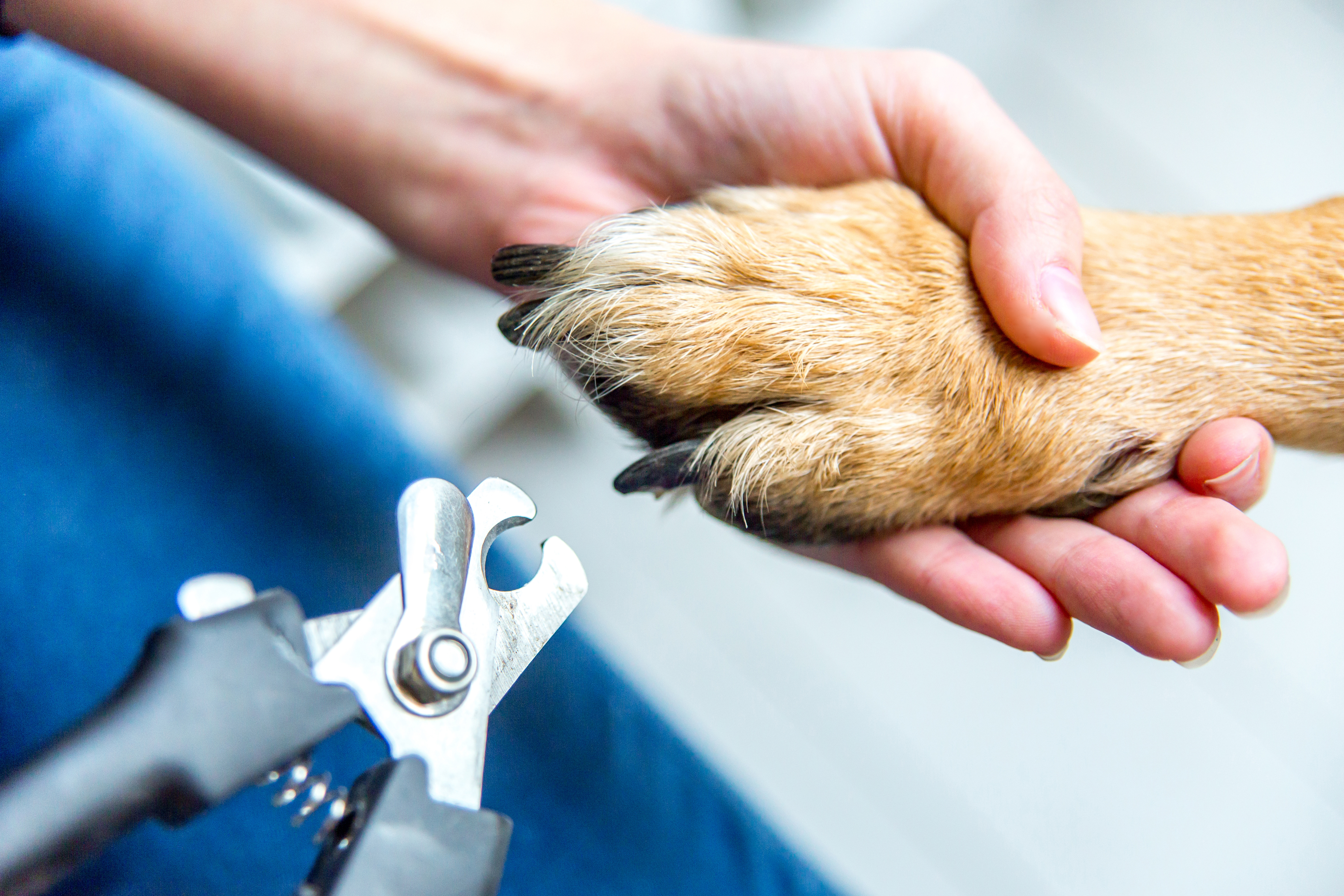Key Takeaways
- Fleas and ticks can cause serious health issues in dogs
- Use collars and medications to repel them
- Recognize the signs of infestations to quickly remove fleas and ticks
- Vets can prescribe treatment for fleas and ticks

Fleas and ticks are external parasites that can pose irritation to dogs. Left untreated, flea and tick infestations can lead to serious health risks like Lyme disease and tapeworms. The best way to deal with fleas and ticks is to implement preventive measures.
Let’s review the best flea and tick prevention for dogs, how to identify parasitic infections, and pet protection essentials.

Flea and Tick Prevention for Dogs
Understanding Fleas and Ticks
Fleas and ticks are both common external parasites in dogs. They can lay eggs and fester in a dog’s coat, potentially infecting a dog with harmful diseases and infections. Some diseases could even spread to humans. When a flea or tick clings onto a dog, it is called an “infestation”.
Ticks are small, visible arachnids that live in grass, making it easy for dogs to catch ticks when going on walks. Paralysis ticks are the most dangerous type of ticks since they can cause paralysis in both dogs and people.
Unfortunately, fleas can flourish in both the great outdoors and inside homes. All dog owners should implement flea prevention measures.
Life Cycle and Behavior
Fleas have a 3-week life cycle, during which they go through the stages of egg, larva, pupa, and adult. Once a flea ages into an adult, they seek to live on animals. A female adult flea can lay over 40 eggs a day on an animal’s skin. That is why when fleas infect dogs, it can be difficult to eliminate them.
Flea eggs brought home from outdoors can fall inside onto carpets. Larvae can easily hide within carpet fiber, forming a cocoon and becoming pupae.
Ticks are extra resilient. A tick may lay 4,000 to 6,500 eggs before dying. A tick nymph can live for over a year and a half without any food. Adult ticks will seek out dogs and other large animals to suck their blood.
In some states, flea and tick season lasts year-round. This means you need to always stay vigilant of potential infestations.
Health Risks for Dogs
Uncomfortable skin irritation, tapeworm infestations, bacterial infections, and Lyme disease are just a few of the health risks posed by fleas and ticks. A paralysis tick infestation is the most dangerous since it could cause tick paralysis in dogs. Fleas also carry Bartonella, which causes Bartonellosis, a severe disease in dogs.
Let’s go over the signs of flea and tick infestations and what health complications they can cause dogs.

Signs and Symptoms of Flea and Tick Infestations
Symptoms of fleas on a dog
-
Excessive scratching: Fleas can cause dogs to scratch, itch, and bite at their own skin.
-
Skin irritation and redness: Fleas can cause infection and flea allergy dermatitis.
-
Hair loss: Fleas can cause a loss of fur in dogs.
-
Tapeworms: Tapeworms are an internal parasite. If a dog accidentally swallows a flea, this can lead to tapeworm infection.
-
Flea dirt: The droppings of fleas appear to be tiny, dark grains on a dog’s coat.
-
Anemia: Flea bites can cause anemia, reducing your dog’s red blood cell count.
Symptoms of ticks on a dog
-
Visible ticks: Ticks are large enough to be seen by the naked eye. They are most often found on the head, neck, ears, and paws of dogs.
-
Skin irritation and redness: Like with fleas, ticks can cause frustrating skin irritation for dogs.
-
Vomiting: Dogs may retch and vomit after being bitten by a tick.
-
Fever: Tick bites can result in fever and chills.
-
Loss of appetite: Inappetence is a common symptom following tick infestation.
-
Paralysis: A bite from a paralysis tick can lead to loss of coordination and, ultimately, paralysis.
Preventive Measures for Flea and Tick Control
Use of Preventive Products
Topical prevention products can help repel fleas and ticks. Topical tick prevention is highly recommended for fending off ticks and killing adult fleas. However, beware that some topical preventive products are toxic to cats, so be careful if your household has other pets.
Oral flea and tick meds can fight off fleas and ticks that try to bite your dog. Oral medications include Nexgard and Sentinel.
Flea and tick collars can prevent dogs from getting infected by these pests. Worn on the neck, this type of prevention could last over half a year before needing a replacement.
Regular Grooming and Inspection
Not only does grooming help your dog feel more clean and comfortable, but it is also the perfect time to see if your dog has any fleas or ticks on them. Bathe and groom your dog regularly to keep them clean. This is even more important if your dog lives an active, outdoor lifestyle.
Remember to use dog-friendly shampoos. Choose anti-flea and tick shampoos that can deter these parasites from your dog’s skin.
When grooming your dog, inspect them frequently for fleas and ticks. Look at commonly infected areas, such as the neck, ears, and paws. Comb through thick, matted fur using a suitable flea comb to see if any pesky parasites are hiding.
Environmental Management
Keep your yard clean and tidy to reduce the chances of parasitic infection. This means mowing the lawn, raking leaves, and removing brush. Fleas and ticks can hide in tall grass, so keeping the grass short can help as well.
If you live in a region with thick woods, humid air, and lush grass, consider treating your backyard by using flea and tick prevention chemicals.
As for indoor cleaning, keeping a clean space in your home can also help you prevent fleas and ticks from growing on your dog’s coat.
Vaccination
Vaccines can help reduce the severity of diseases that a dog can catch from ticks. If you live in an area where Lyme disease is common, you might want your dog to obtain the vaccine, since ticks often transmit Lyme disease in the northeast, midwest, and west of the United States.
Importance of Consistency
Parasite prevention measures should become a habit for both you and your dog. Get into the routine of grooming them and checking them for external parasites. Even if you live in an area not known for flea and tick populations, checking for parasites on your dog ensures early detection of any skin or coat problem.
Treatment Options for Flea and Tick Infestations
Removal
Quickly (but gently) remove any fleas or ticks you see on your dog’s skin. Ticks can attach deeply into the skin, making the process more difficult and painful. Getting rid of ticks as soon as you see them reduces the chances of the ticks spreading.
Warm water and mild soap can help you remove fleas from a dog’s skin. If you want to use flea shampoo or other products, it’s a good idea to ask your vet about removal options first. Some dogs may not be compatible with flea removal products due to dry skin.
Medications
Your vet may prescribe medications to deal with your dog’s parasite problems. Oral medications become active in the dog’s bloodstream, skin, and tissue after being swallowed. If a flea or tick bites the affected dog, they will ingest the anti-parasite medication and end up dying.
Environmental Treatments
It’s important to eradicate the fleas and ticks that might have followed your dog home or infested your yard. Use environmental treatments to clean your carpet, garden, and other potentially infested areas.
Professional Grooming Services
A professional dog groomer can help you effectively deal with flea and tick infestations. Dealing with parasites can be challenging and disturbing – a dog groomer can help ensure the process is expertly done. Most dog groomers offer a flea and tick package that comes with medicated shampoo, further increasing the effectiveness of treating flea and tick infections.
Natural and Alternative Flea and Tick Prevention Methods
Using alternative methods at home to supplement flea and tick prevention can be a good idea. However, don’t forget to visit the vet if your dog is suffering from infections and parasites. Medical complications may require prescriptions and vet exams.
Try cedar mulch
Cedar is repulsive to fleas. Applying cedar mulch to your gardens and backyard can serve as a useful natural barrier against fleas.
Create DIY flea traps
Using a wide bowl of soapy water, it is possible to lure in fleas. Shine a lamp over the water to bait the fleas into jumping toward the light. If they fall into the water, they won’t be able to jump out due to the slippery soap.
Pet Insurance for Dogs
Pet insurance provides valuable financial assistance in case of a covered vet expense.
There are three main coverage types for pet insurance.
Accident-only: Pet insurance that covers treatment and diagnostic costs related to accidents. Commonly covered incidents include toxic ingestion, broken bones, and lacerations.
Accident and illness: Comprehensive coverage. Covers vet expenses related to both accidents and illnesses. Eligible claims include treatment for cancer, diabetes, and arthritis.
Preventive care: Typically offered by insurers as a wellness plan add-on. Preventive care includes financial assistance for dog vaccinations, dental cleanings, and parasite medications. If you want to prevent fleas and ticks on your dog, it is highly recommended to obtain a wellness plan.
Understanding Pet Insurance
Policy Limits and Exclusions: Certain dog ages and breeds are harder to insure. In addition, pre-existing conditions are not covered by pet insurance.
Premiums: Dog insurance usually costs around $66 a month if you want comprehensive coverage. Accident-only insurance can go as low as $10 monthly, but the coverage may be lacking in case your dog falls ill.
Deductibles: The amount you need to pay out-of-pocket before pet insurance kicks in. Most pet owners pick a deductible of $250.
Factors to Consider When Choosing Pet Insurance
- Breed and Age of the Dog
Exotic dog breeds and older or younger dogs can be harder to insure. When seeking pet insurance, make sure your dog meets the breed and age requirements of the desired policy.
- Pre-existing Conditions
If your dog receives a diagnosis before you obtain pet insurance, the insurer will not cover treatment expenses for that diagnosis. Because of this, it is generally advisable to obtain pet insurance as early as possible. This could also help reduce the insurance premium since it costs more to insure senior dogs for the first time.
- Coverage Options and Limits
Consider the type of coverage that will suit your dog’s needs and your financial situation. It’s recommended to obtain a wellness plan that covers parasite medications to reduce the annual costs of flea and tick prevention for your dog.
A coverage limit of $10,000 is popular among pet owners since this is generally enough to cover the emergency vet expenses that could arise within a year. If you suspect you require more coverage due to a complicated canine illness or circumstance, you can obtain unlimited pet insurance at a higher premium.
- Reputation and Customer Service of Insurance Providers
The pet insurer you choose should have good financial stability and a solid track record of processing insurance claims.
Want to get a headstart on finding the best pet insurance for dogs? Check out some of the top pet insurance providers today.
Steps to Obtain Pet Insurance for Dogs
When shopping for pet insurance, begin by researching the different insurance providers. Compare quotes and coverage options so your policy provides adequate coverage for your dog.
To ensure a smooth insurance application and enrolment process, you will need to provide information about you and your dog. This includes your dog’s breed, age, and medical condition.

Benefits of Pet Insurance for Flea and Tick Prevention and Treatment
1. Financial Assistance for Veterinary Costs
Pet insurance can cover a wide variety of unpredictable veterinary bills, ensuring pet owners can afford the services needed for pet care.
2. Coverage for Flea and Tick-related Health Issues
Flea and tick prevention measures can cost around a month. A routine vet visit costs up to $250 based on your dog’s medical condition and can quickly identify whether your dog has any parasite infestations. More serious flea and tick symptoms can result in higher vet bills due to the price of antibiotics and treatment for potential paralysis. Tick paralysis costs over $2,000 to treat, and more if it poses life-threatening complications.
Pet insurance can greatly reduce the financial burden of tick and flea treatment costs.
3. Peace of Mind
Caring for a canine companion can be stressful at times, whether due to health concerns or financial challenges. Pet insurance provides valuable peace of mind, reducing the stress on pet owners.
Summary
Fleas and ticks aren’t just nuisances for dogs – they can pose serious health concerns like Lyme disease, tapeworms, anemia, and paralysis. It’s important to prevent fleas and ticks by regularly grooming your dog and maintaining a clean backyard. Proactive measures are far cheaper and more comfortable for your dog.
If you’re struggling to pay the costs of flea and tick prevention or parasite medications, consider obtaining pet insurance with a wellness plan. These policies allow pet owners to afford the veterinary care their dogs need.




























